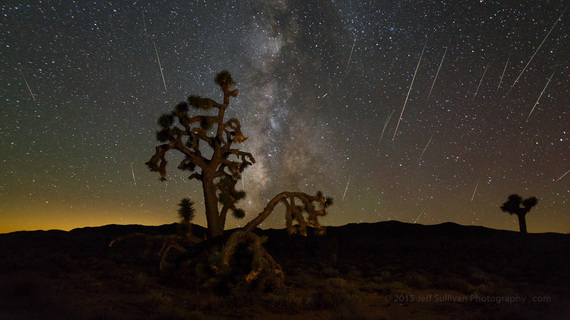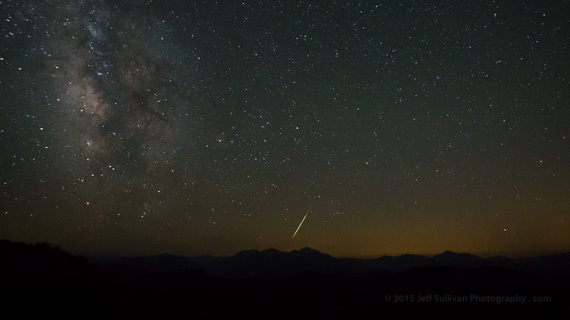Comet Swift-Tuttle only passes the earth and circles the sun once every 133 years, but the earth passes through its trail of dust every year. The debris field is large, so Perseid meteors may be seen on nights from July 17 through August 24. The earth passes through the most dense portion of the comet's dust trail on the night of August 12-13, so that is when the peak, or maximum hourly rate of meteors, is seen.
On any given night, the sun sets as your position on the earth rotates away from the sun, then around midnight you rotate to a point directly opposite the sun. As the earth also moves in its orbit around the sun, your position on the earth is just starting to rotate to the side of the earth leading its movement through space, which collides with more debris. So meteor rates go up starting at midnight. At dawn you're approximately in the middle of the face of the earth as it flies through space, so meteor rates continue to climb slightly towards dawn. So the best bet in the evening is after midnight, in the last hours of darkness before the dawn's oncoming light brightens the sky.
This year I pursued the Perseids on the mornings of August 9, 11, 12 and 13. The best viewing was on the morning of the 13th, as expected. The composite photo above shows many of the meteors that my camera picked up over the course of nearly four hours.
I assembled a time-lapse video that condenses several hours of meteor activity into seconds of video. You can see it on Vimeo here.
Not everything that moves in the video are meteors; the meteors are the brief streaks of light, the slower ones are airplanes. As you see the Milky Way and stars move, that is from the rotation of the earth. You can also see smoke from California's forest fires.
According to Wikipedia, Comet Swift-Tuttle has been described as "the single most dangerous object known to humanity". But don't worry, its next close encounter with the earth isn't expected until the year 4479. With a nucleus 26 kilometers across, if there were an impact, the force is estimated to be 27 times larger than the one which formed the Chicxulub crater beneath the Yucatán Peninsula in Mexico, which is believed to have caused the extinction the dinosaurs. Doomsday preppers take note, you only have 2464 years to get ready!

